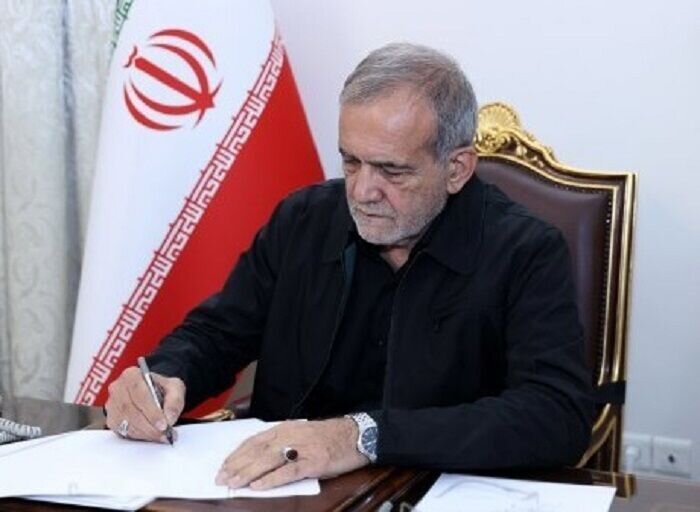President Pezeshkian enacts national handicrafts development plan

TEHRAN – Iranian President Masoud Pezeshkian on Tuesday officially issued the “National Document for the Development of Handicrafts,” a pivotal step to bolster the country’s traditional arts and crafts sector.
The document, approved during the 903rd session of the Supreme Council of the Cultural Revolution on August 27, sets a comprehensive framework for revitalizing and promoting Iranian handicrafts on national and international stages.
The directive has been communicated to a wide range of governmental bodies, including the Ministries of Cultural Heritage, Tourism, and Handicrafts; Economy; Foreign Affairs; Education; Agriculture; and Industry, among others. Key organizations like the Islamic Republic of Iran Broadcasting, the National Iranian Standards Organization, and various chambers of commerce will also play roles in the document’s execution.
The national strategy underscores the role of handicrafts as a cultural pillar, aiming to preserve and modernize traditional Iranian crafts while enhancing their contribution to the national economy. According to the document’s text, its objectives include increasing the share of handicrafts in the GDP, expanding domestic and international markets, and promoting the cultural identity embedded in these crafts.
The document also highlights the need for technological integration, urging adaptation to innovations such as artificial intelligence, blockchain, and the metaverse to ensure the sector remains competitive and relevant in a rapidly evolving global market.
The document also refers to a number of challenges and solutions on the path of its chosen goals. Despite its rich heritage and time-honored history, the handicrafts industry faces numerous challenges, including fragmented management, inadequate market access, and the absence of large-scale enterprises, part of its text reads.
The document, however, proposes a series of measures to address these issues, such as enhancing educational frameworks, streamlining regulatory processes, and fostering investment in the sector.
When it comes to strategies and action plans, the document outlines several broad policies, including promoting a culture of handicraft consumption, developing competitive industries, and integrating modern technologies into production processes.
According to its text, practical steps include organizing training programs, facilitating exports, and establishing a national database for craft designs and artisans.
By implementing these measures, the government aims to elevate the status of handicrafts sector, ensuring its growth and sustainability in both local and global markets. This initiative, according to experts, seeks to not only help preserve Iran’s cultural heritage but also to contribute significantly to economic development and job creation.
Currently, a selection of 13 cities and three villages in Iran have been registered by the World Council of Handicrafts as “world cities of handicrafts”.
Iranian handicrafts, whose know-how passed down from generation to generation, are a testament to the country’s rich cultural heritage. In other words, they blend centuries of tradition with artistic excellence.
Each region in the ancient country is renowned for its unique crafts, reflecting local history, customs, and natural resources.
Persian carpets, perhaps the most famous of Iran’s handicrafts, are globally celebrated for their intricate designs, vivid colors, and exceptional craftsmanship. These carpets often tell stories, combining geometric and floral patterns with motifs inspired by nature and Persian poetry.
Another notable craft is Persian pottery and ceramics, dating back thousands of years. Metalwork, including silver and copper engraving, is also a vital part of Iran’s handicraft tradition. Additionally, Iranian miniature painting and marquetry (known as Khatam) showcase the country’s expertise in fine, detailed artwork.
AM
Leave a Comment